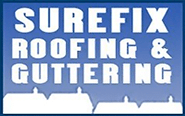Established in 1997
How to Identify and Fix Common Roof Leaks: A Homeowner's Guide
Roof leaks can be a homeowner's worst nightmare, leading to costly repairs and potential damage to your home’s structure and interior. Detecting and addressing these leaks promptly can save you a lot of trouble. Here’s a guide to help you identify and fix common roof leaks effectively.
Identifying Roof Leaks
1. Check for Visible Signs
Start by inspecting your roof from the ground. Look for any obvious signs of damage, such as missing shingles, cracked tiles, or sagging areas. These can be indicators of potential leaks. If you can safely access your roof, use a ladder to get a closer look at these areas.
2. Inspect the Roof’s Flashing
Flashing is the material used around chimneys, skylights, and vents to prevent water from seeping through. Check for any signs of rust, damage, or gaps in the flashing. Damaged or improperly installed flashing is a common cause of roof leaks.
3. Look for Stains and Discolouration
Inside your home, examine the ceilings and walls for water stains or discolouration. Stains that appear in a specific pattern or area can often indicate the location of the leak on your roof.
4. Check Attics and Roof Spaces
If you have an attic, inspect it for signs of leaks. Look for damp spots, mould growth, or water stains on the underside of the roof deck. This can provide clues about where the leak is originating from.
5. Perform a Water Test
On a dry day, use a garden hose to simulate rain. Start at the bottom edge of the roof and slowly work your way up, allowing water to flow over different sections. Have someone inside the house look for leaks while you do this. This method can help pinpoint the exact location of a leak.
Fixing Common Roof Leaks
1. Repair Missing or Damaged Shingles
If you find missing or damaged shingles, replace them promptly. Remove the damaged shingle, apply roofing adhesive or nails, and install a new shingle in its place. Ensure that the new shingle is properly aligned and sealed.
2. Seal Flashing Gaps
If you notice gaps or damage in the flashing, apply a roofing sealant to seal the gaps. For larger issues, you might need to replace the flashing entirely. Ensure that the new flashing is properly installed to prevent future leaks.
3. Fix Roof Ventilation Issues
Roof vents that are cracked or damaged can also lead to leaks. Replace any broken vent covers and check that the vents are properly sealed and secured.
4. Clear Clogged Gutters
Clogged gutters can cause water to back up and seep under the roof’s edge. Regularly clean your gutters to ensure that water flows freely. If you find any damage or blockages, address them immediately to prevent leaks.
5. Patch Small Holes and Cracks
Small holes or cracks in the roof can be patched with roofing cement or sealant. Clean the area around the hole, apply the sealant, and smooth it out. This can provide a temporary fix until a more permanent repair can be made.
When to Call a Professional
While DIY repairs can address minor issues, some roof leaks may require professional intervention. If you’re unsure about the extent of the damage or if the repairs are beyond your skill level, it’s best to consult a roofing professional. They have the experience and tools to assess the situation accurately and perform repairs that ensure long-term protection for your home.
Preventive Measures
To reduce the risk of future leaks, consider the following preventive measures:
- Regular Roof Inspections: Schedule regular roof inspections to catch potential issues before they become major problems.
- Gutter Maintenance: Keep gutters and downspouts clean to prevent water from backing up and damaging your roof.
- Tree Trimming: Trim overhanging branches that could potentially damage your roof or drop debris into your gutters.
Conclusion
Identifying and fixing roof leaks is crucial for maintaining the integrity of your home. By following these steps, you can address common roof leaks effectively and prevent further damage. If you encounter persistent issues or need professional assistance, don’t hesitate to contact a roofing expert. Ensuring your roof remains in top condition will protect your home and provide you with peace of mind.










We will get back to you as soon as possible
Oops, there was an error sending your query.
Please try again later


